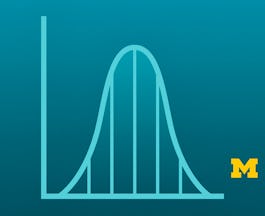Filter by
The language used throughout the course, in both instruction and assessments.
117 results for "infographics"

The State University of New York
Skills you'll gain: Research and Design, Communication, Data Visualization, Visual Design, Critical Thinking, Graphic Design, Project Management

Skills you'll gain: Cryptography, Security Software, Cyberattacks, Leadership and Management

Arizona State University
Skills you'll gain: Communication

The State University of New York
Skills you'll gain: Communication, Data Visualization, Research and Design, Visual Design, Graphic Design

University of Michigan
Skills you'll gain: Basic Descriptive Statistics, Data Analysis, General Statistics, Probability & Statistics, Statistical Analysis, Probability Distribution, Statistical Visualization, Data Visualization, Python Programming, Statistical Tests, Computer Programming
 Status: Free
Status: FreeUniversity of Minnesota
Skills you'll gain: Resilience

Coursera Project Network
Skills you'll gain: Graphic Design, Marketing, Social Media

Northwestern University
Skills you'll gain: Digital Marketing, Marketing, Social Media, Strategy, Customer Analysis, Customer Success, Decision Making, Market Research, Media Strategy & Planning, People Management

Arizona State University
 Status: Free
Status: FreeErasmus University Rotterdam
Skills you'll gain: Game Theory

Arizona State University

Arizona State University
Skills you'll gain: Communication
Searches related to infographics
In summary, here are 10 of our most popular infographics courses
- Applied Digital Literacy: The State University of New York
- Introduction to Cybersecurity Tools & Cyber Attacks: IBM
- Building Relationships with Communication: Arizona State University
- Digital Information Literacy: The State University of New York
- Understanding and Visualizing Data with Python: University of Michigan
- Resilience in Children Exposed to Trauma, Disaster and War: Global Perspectives: University of Minnesota
- Créer du contenu pour les réseaux sociaux avec Piktochart: Coursera Project Network
- Engagement & Nurture Marketing Strategies: Northwestern University
- Digital Communication and Emotion: Arizona State University
- Serious Gaming: Erasmus University Rotterdam










